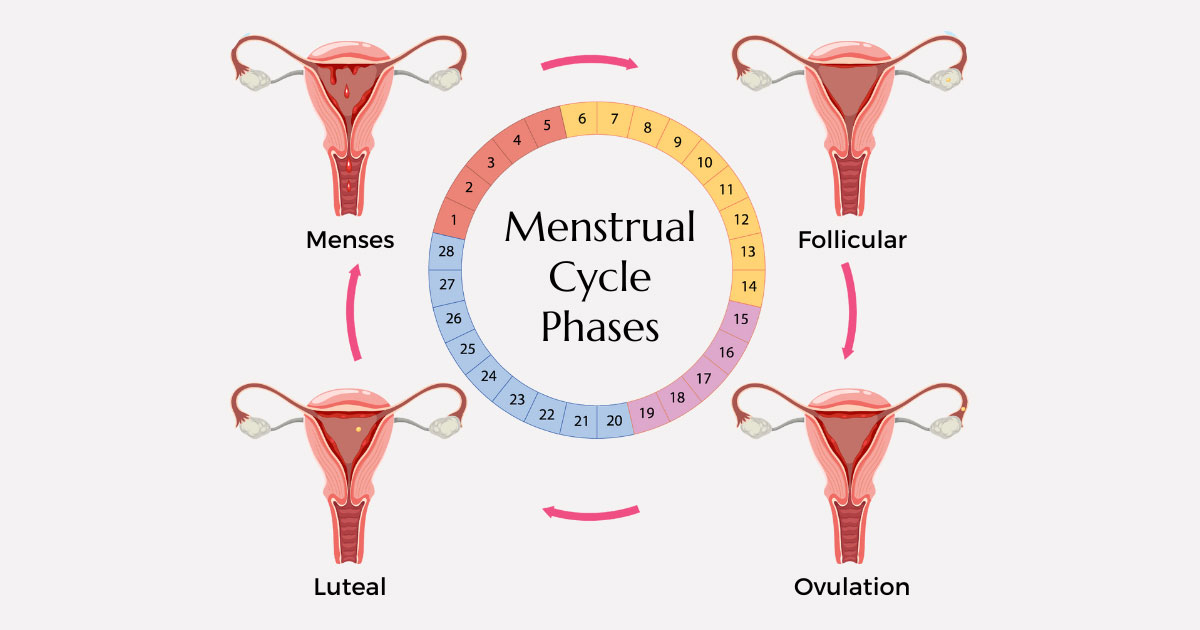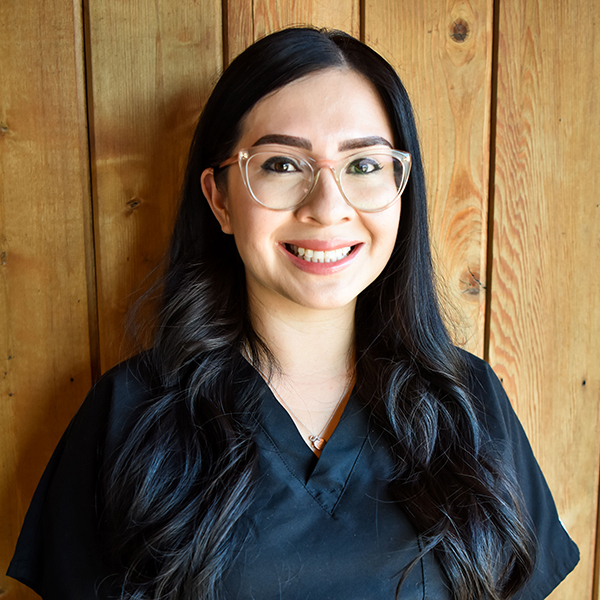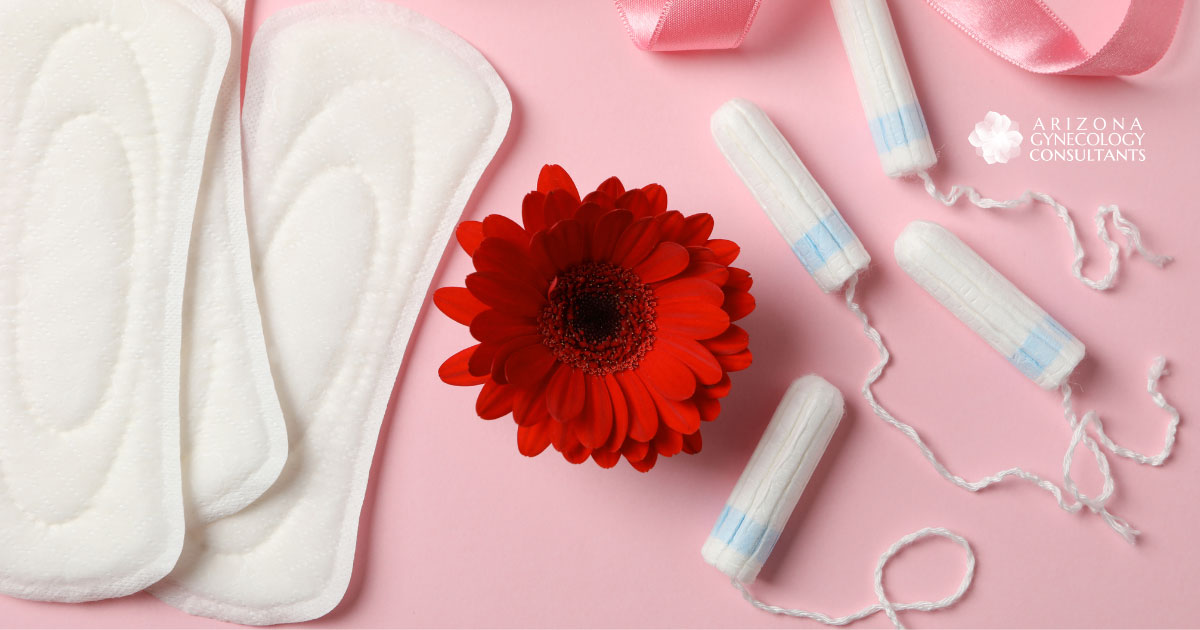A period is a normal and natural occurrence for the vast majority of women at some point in their lives. Unfortunately, even though such a large portion of the population will experience menstruation in their lifetimes, we still live in a time where people hesitate to talk about periods. The topic is still taboo, discussed in hushed tones, and almost never brought up in mixed company.
For example, many people purchasing period products like pads, tampons, menstrual cups, and even PMS supplements or medications experience shame or embarrassment when a non-menstruating person is at the checkout counter. Still others won’t consider asking a male partner or parent to pick up any period products they need. Even worse, some parents don’t discuss the ins and outs of menstruation with their menstruation-aged children, which can lead to confusion, fear, and mismanagement of period symptoms when they arrive. This can lead to teens and even adults who are not only unaware of what a normal period should look like but fearful or embarrassed to seek help when things aren’t normal – and then delays in getting help when symptoms of disorders and irregularities arise.
These are just a few of the many reasons it’s so important to talk about our periods and reduce the stigma surrounding the discussion. It’s a natural and healthy function of the body, not something we should be hiding in the dark.
Period Basics
Learning some period basics is a great way to ease into the period conversation and can help you be more knowledgeable about the topic if an opportunity arises.
What Is a Period?
A period, another word for menstruation, is a part of the human menstrual cycle, which usually lasts between 24 and 38 days. This time period describes a point in the cycle when the uterus sheds the lining it has been retaining for most of the rest of the cycle. The mechanism behind menstruation explains why period blood appears a little different than other blood: it’s made up of both blood and tissue.
Hormones (chemical compounds that serve as the body’s messengers) begin a period by sending a signal to the body to begin the process of menstruation. However, before this signaling takes place, the ovaries and the pituitary glands in the brain release hormones that tell the walls of the uterus to become thicker. This is preparation for a potential pregnancy and gives the egg a place to implant into as well as nutrition in the early stages of pregnancy. If fertilization doesn’t happen, the thickened lining eventually breaks down and is shed during a period.

Menstrual Cycle Phases
There are four separate phases of the menstrual cycle, each triggered by natural changes in hormones.
Stage I: Menses
The first phase is called menses. During this phase, a person experiences their period, or the shedding of the uterine lining. This typically lasts from 3 to 5 days, but periods may last a week or more, depending on the individual.
Stage II: Follicular Phase
This phase actually overlaps with the menses phase, as it begins when you get your period and ends with ovulation. It is during this phase that the uterine walls begin to thicken as estrogen levels increase. Additionally, another hormone called follicle-stimulating hormone triggers the growth of follicles in the ovaries, one of which will grow and prepare the egg for ovulation. This typically happens between days 10 and 14 of the cycle.
Stage III: Ovulation
Ovulation occurs when the fully formed egg is released by the ovary. This happens due to another hormone, luteinizing hormone. You can expect ovulation immediately after the follicular phase ends, typically on day 14 of the menstrual cycle.
Stage IV: Luteal Phase
The luteal phase is the longest phase in the menstrual cycle and occurs as the egg travels through the fallopian tube to end up in the uterus. The hormone progesterone increases and the uterine lining prepares for pregnancy. If the egg is fertilized by sperm and a pregnancy occurs, the egg attaches itself to the wall of the uterus. If a pregnancy doesn’t happen, progesterone decreases, and then the body begins to shed the uterine lining. This starts the cycle over from the beginning.
When Do Periods Start?
While starting menstruation is often considered a hallmark of puberty, most people notice other signs of early puberty first, including breast development and pubic hair. On average, girls have their first period around 12 years old, with the typical range being 10 to 15 years old. However, a girl can begin having a period as young as eight years old. If she doesn’t start having periods by 15, a conversation with a gynecologist might be necessary.
Delayed onset of menstruation is often linked to family history. If multiple women in a family have historically started menstruation after age fifteen, the same may be true for others.
If this is not the case, and other signs of puberty are present, ask a gynecologist about other potential reasons, including:
- Birth defects
- Weight (underweight or overweight)
- Eating disorders or poor nutrition
- Chronic illness
- Genetic disorders
- Too much exercise
- High stress
- Medication issues
- Hormonal imbalances, whether from a hypothalamus or pituitary issue, PCOS, or something else
Conditions Associated With Periods

Frank conversations about periods can help people develop an understanding of the menstrual cycle so they know what to expect and how to tell if things aren’t normal. Many people experience abnormal periods and other conditions that range from uncomfortable to downright debilitating. Talk about any concerns with your gynecologist and determine if you might be experiencing one of these period-adjacent conditions.
Endometriosis
Endometriosis affects as many as one in ten menstruating people worldwide. Unfortunately, despite the fact that it is so common, endometriosis is not talked about nearly enough. This leads to many people experiencing the symptoms of endometriosis without being diagnosed.
Endometriosis occurs when the tissue that makes up the uterine lining grows in places other than the uterus. Just like the uterine lining, this tissue is also shed when hormone signals indicate it is time; however, there’s nowhere for the blood to go because it’s not in the right location to be expelled. This blood is then trapped in the body. Frequently, people experience incredibly painful periods, pain during sex, and even heavier than typical bleeding during menstruation. Those with endometriosis also frequently have difficulty becoming pregnant. Pain medication can help, but sometimes surgery is needed to reduce pain and assist with pregnancy issues.
PCOS
Another condition, PCOS, or polycystic ovary syndrome, affects nearly six million people in the United States alone. Hormonal dysregulation causes the ovaries to be enlarged and develop small cysts – hence, the term polycystic ovary syndrome. Obesity, excessive hair growth, acne, and irregular periods are all symptoms of PCOS, as is reduced or absent ovulation. The symptoms of PCOS can be treated if identified, and those who want to become pregnant can still do so with the help of medication or surgery.
Adenomyosis and Fibroids
Adenomyosis occurs when tissue that typically grows in the uterine lining also grows in the uterus’s muscular wall. In turn, this enlarges the uterus, and it can mean very heavy bleeding during periods. People with adenomyosis can also experience painful intercourse, longer periods, and incredibly painful cramps. Fibroids grow in the uterus and are made of smooth muscle cells. While these tumors are never cancerous, they can increase the length of the period, cause heavier bleeding during periods, and pain in the pelvic region.
What Are Some Misconceptions About Periods?
Unfortunately, many myths and misconceptions about periods began and are perpetuated because we’re not having honest, factual discussions about menstruation. Some of the most common myths center around shame, making the subject even more taboo. Here are a few of the most common, as well as the associated facts to debunk them.
Myth: Period Blood Makes You Dirty
One of the most common myths relating to menstruation is about period blood being dirty. For many people, this myth is perpetuated due to religious and cultural views about women during menstruation and can result in the unnecessary use of harsh chemicals and douches in an attempt to “get clean.” Period blood is a combination of blood and tissue and is not inherently dirty – it’s simply blood that’s shed during menstruation. Practicing standard period hygiene like drinking plenty of water, regularly changing pads or tampons every four to eight hours, sticking to unscented products, and keeping the external genitals clean with warm water can help you feel clean during your period – just remember that you are not unclean simply because you’re menstruating.
Myth: Having Sex During Your Period Is Gross
It’s often suggested that sex on your period is dirty or bad for you. Just like period blood isn’t dirty, having sex on your period is no dirtier than having sex at any other time. While it can certainly be much more messy, there can also be a few benefits, like reduced cramps and increased mood. While many people aren’t in the mood for sex during their period, many others are – and either preference is fine.
Myth: Tampons Are Taboo
Another unfortunate myth involves the use of tampons. Some parts of society once believed that tampon use made women promiscuous, while others claimed women were no longer virgins after inserting tampons. These myths are, of course, incorrect. Virginity is a social construct that can be problematic for many reasons, but it refers only to voluntary sexual intercourse and not to any products that are used for a period.
Myth: PMS Makes Women Irrational
Premenstrual syndrome, or PMS, is a completely misunderstood concept. It’s been used as an insult, a way to explain away even the most warranted of mood changes, and even as a sneaky way to discuss a person’s period. While researchers believe PMS can be attributed to hormonal fluctuations, the reason some people experience severe PMS while others experience mild discomfort remains unclear. PMS symptoms can include irritability and mood changes, but it is more frequently associated with symptoms like fatigue, difficulty concentrating, and bloating.
Not every person who menstruates experiences PMS. In addition, a small percentage of people experience a more severe form of PMS called PMDD, or premenstrual dysphoric disorder, that causes more extreme shifts in mood.
Myth: You Can’t Get Pregnant While Menstruating
The myth that you can’t become pregnant if you have sex on your period is a dangerous one that can lead to unintentional pregnancy. Regardless of the time of the month that intercourse occurs, pregnancy can be the result of any unprotected sex. While pregnancy must occur after ovulation, pregnancy can happen if ovulation occurs before menstruation has ceased and up to three days after ovulation. Alternatively, people often get pregnant after experiencing spotting that seems like menstruation but is not.
Myth: You Shouldn’t Get in the Water During Your Period
This myth was likely associated with the difficulty of wearing pads and other menstrual hygiene products while swimming. The advent of tampons and menstrual cups has helped many women feel more comfortable swimming during their periods. Swimming while on your period is totally fine, and your period blood will not contaminate pool water, which has been treated with chlorine and other chemicals to address other bodily fluids like sweat and urine.
Myth: Having a Period Once a Month Is the Only Normal Cycle
Many people don’t have a period every month because their cycle is naturally a bit longer than the typical 28 days. In addition, taking hormonal birth control can mean you will skip a period by preventing the buildup of the uterine lining altogether. Having your first period is important so that you know that your reproductive organs are functioning properly, but cycles can vary among people and even on an individual basis, especially when you’re stressed, taking birth control, experiencing an illness, weight fluctuations, and more. If you notice an abrupt change, speak with your gynecologist.
Myth: Period Pain Isn’t That Bad/Women Are Exaggerating
Finally, the idea that period pain isn’t “that bad” is a serious misconception. In recent years, devices have been developed that can simulate the period discomfort experienced by people with mild, moderate, and severe cramps. If you’ve ever seen a video of this device in action, you see that many people have a difficult time coping with the pain and are mind-boggled when they learn that people still have to work, parent, and go about their daily lives while experiencing painful cramps.
It’s important to note that while severe cramping isn’t necessarily a sign that there’s something wrong, you should discuss it with your gynecologist to rule out the possibility of hidden issues like endometriosis, PCOS, and more.
Talking About Your Period: End Period Shame

Talking about periods helps to demystify menstruation and create normalcy surrounding something over half the population experiences nearly 500 times in their lives – over 6.5 years of time in total. When we can talk about periods openly and without shame, more people – both with and without periods – will expand their knowledge base and compassion. This can mean more people can access the regular products and care they need or seek care when they’re experiencing irregularities. While the discussion might feel uncomfortable initially, being conscious about what’s going on with your body can improve your life or even save it.
It’s even more important to become comfortable talking to our young ones about their periods. All too often, girls don’t know what to expect and might seek information from unreliable sources or feel ashamed or even fearful when their period begins. Open, honest conversations about periods can help people feel more comfortable with changes in menstruation from puberty all the way to menopause.
As we reduce the shame and taboo surrounding periods, we can normalize seeking care for gynecological concerns. Start by talking about periods with the people you love the most. Then, continue the discussion by scheduling an appointment for gynecological services with Arizona Gynecology Consultants today. Together, we can help to break period stigma.
Sources :
- World Health Organization. (n.d.). Endometriosis. Retrieved January 23, 2024, from https://www.who.int/news-room/fact-sheets/detail/endometriosis
- Endocrine Society. (n.d.). PCOS (Polycystic Ovary Syndrome). Retrieved January 23, 2024, from https://www.endocrine.org/patient-engagement/endocrine-library/pcos
- Cleveland Clinic. (n.d.). Menstrual Cycle: What’s Normal, What’s Not. Retrieved January 23, 2024, from https://my.clevelandclinic.org/health/articles/10132-menstrual-cycle
- Medical News Today. (n.d.). Endometriosis vs. PCOS: What’s the difference? Retrieved January 23, 2024, from https://www.medicalnewstoday.com/articles/endometriosis-vs-pcos
- Wellbeing of Women. (n.d.). Let’s Talk Periods. Retrieved January 23, 2024, from https://www.wellbeingofwomen.org.uk/what-we-do/campaigns/just-a-period/periods-information-hub/lets-talk-periods/
- NHS UK. (n.d.). Polycystic ovary syndrome (PCOS). Retrieved January 23, 2024, from https://www.nhs.uk/conditions/polycystic-ovary-syndrome-pcos/
- UCLA Health. (n.d.). What are Fibroids? Retrieved January 23, 2024, from https://www.uclahealth.org/medical-services/fibroids/what-are-fibroids
- National Center for Biotechnology Information. (n.d.). Uterine Fibroids. Retrieved January 23, 2024, from https://www.ncbi.nlm.nih.gov/books/NBK470216/
- Medline Plus. (n.d.). Polycystic ovary syndrome. Retrieved January 23, 2024, from https://medlineplus.gov/ency/article/001218.htm

Nurse Practitioner
Diana’s healthcare background includes working covid-19 contracts in 4 different cities, women’s health, the pediatric emergency room, pediatric primary care, and adult hospital inpatient care. She has always really enjoyed teaching women about their bodies, and especially enjoys teaching women how the body changes across the lifespan.


